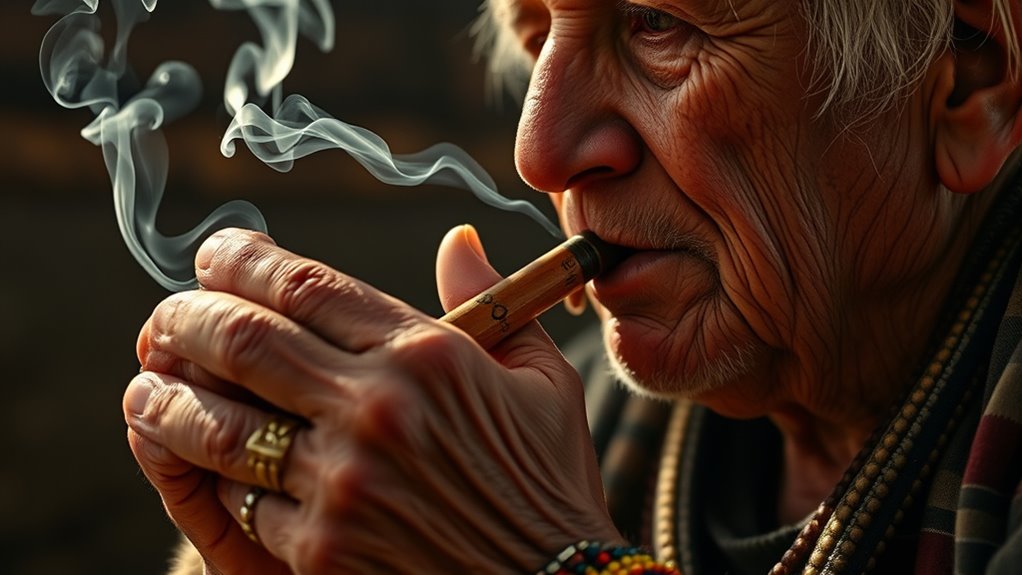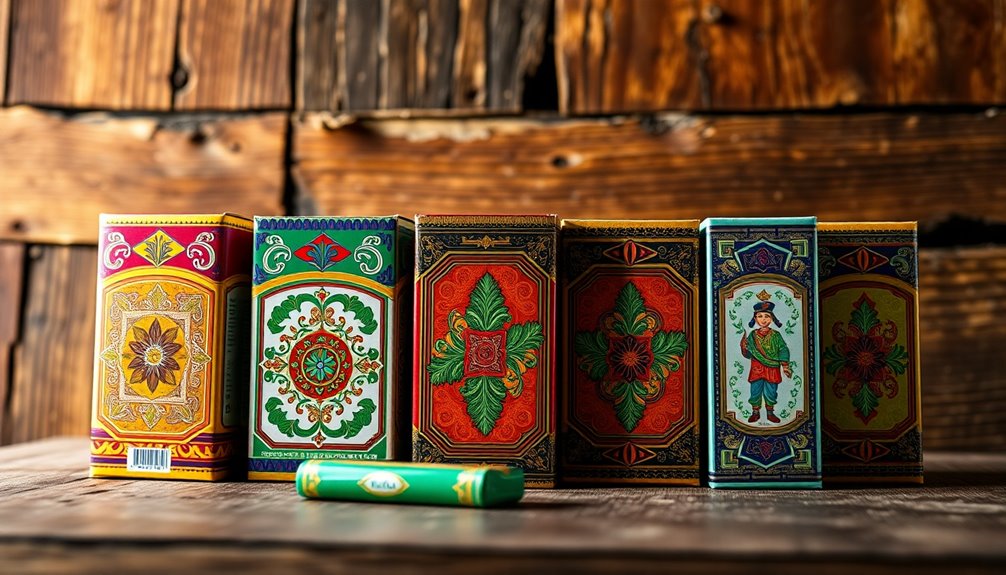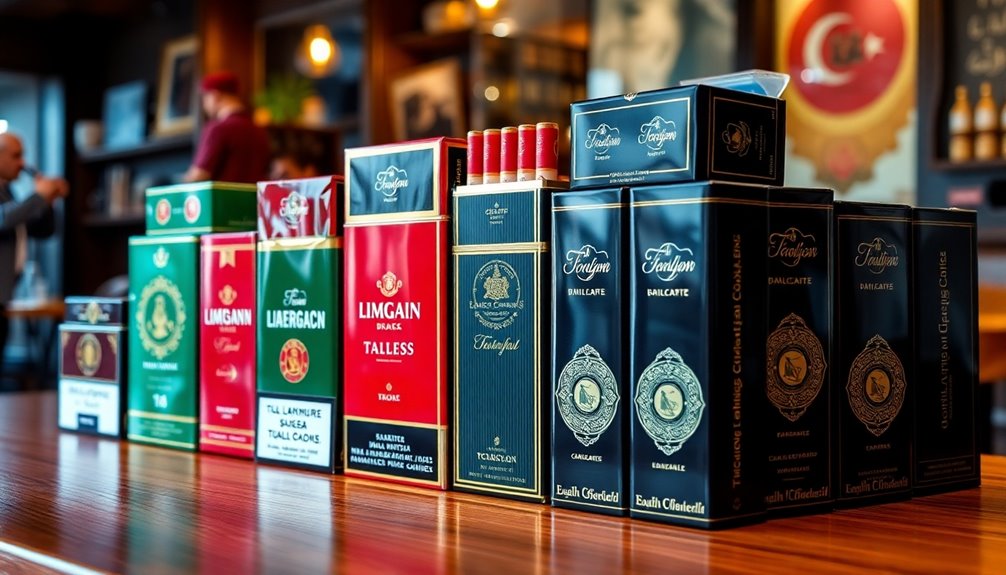The ritual of pipe smoking is a centuries-old tradition rooted in craftsmanship, cultural symbolism, and personal reflection. As modern life shifts towards faster habits, this deliberate act is fading, seen as a nostalgic link to history and values like patience and artistry. Though less common today, many still cherish the ritual’s meaning and craftsmanship. If you keep exploring, you’ll uncover how this practice continues to embody rich cultural heritage and personal significance.
Key Takeaways
- Pipe smoking has deep cultural roots, symbolizing craftsmanship, patience, and tradition across centuries.
- Modern society’s shift to cigarettes and fast-paced lifestyles have led to a decline in pipe smoking rituals.
- Despite reduced popularity, enthusiasts preserve the ritual as a meaningful connection to history and craftsmanship.
- The act involves deliberate routines like packing, tamping, and lighting, emphasizing mindfulness and personal significance.
- Many view the ritual as a fading art, but it remains a cherished practice for those valuing cultural heritage.

Have you ever wondered what makes pipe smoking more than just a habit? It’s a ritual rooted deep in history, shaped over centuries by evolving traditions and varying cultural significances. The history and evolution of pipe smoking trace back thousands of years, with origins that stretch across different civilizations. In ancient times, indigenous peoples around the world used pipes in ceremonies, believing they carried spiritual meaning and served as tools for communication with the divine. When Europeans encountered these practices, they adopted and adapted them, integrating pipe smoking into their social and cultural fabric. During the Renaissance, pipes became symbols of status and leisure, often crafted with intricate details that reflected personal taste and social standing. As time went on, the manufacturing process advanced, leading to the creation of various styles and materials—clays, briars, meerschaum—each carrying its own cultural and historical significance.
The evolution of pipe smoking also mirrors broader social changes. In the 19th and early 20th centuries, pipe smoking was a sign of sophistication and contemplation, often associated with writers, philosophers, and thinkers. It became more than a way to enjoy tobacco; it was a ritual that promoted reflection and focus. Over the decades, however, the cultural significance shifted as cigarette smoking gained popularity, and pipe smoking gradually became less common. Still, the tradition persisted among aficionados who see it as a form of art, a way to connect with history, and a ritual that enriches the act of smoking. Today, many view pipe smoking as a nostalgic practice, a deliberate act of slow savoring in a fast-paced world, and a way to honor centuries of craftsmanship and cultural heritage. The craftsmanship involved in pipe making exemplifies the dedication to tradition and quality that keeps this practice alive.
This cultural significance isn’t just about the act itself but also about the symbolism attached to it. For some, pipe smoking represents a connection to ancestors and traditions, a way to preserve a piece of history that’s slowly fading. For others, it’s a personal ritual—carefully packing the tobacco, tamping it down, and lighting the pipe with intention—transforming a simple pastime into a meaningful experience. The tradition endures because it’s more than just inhaling smoke; it’s about engaging with a centuries-old practice that embodies patience, craftsmanship, and a respect for history. While it might seem like a dying art to some, for many, pipe smoking remains a cherished tradition, a tangible link to the past that continues to hold cultural and personal significance today.
Frequently Asked Questions
How Has Pipe Smoking Influenced Modern Tobacco Culture?
You see, pipe smoking has shaped modern tobacco culture through its rich historical symbolism and artisanal craftsmanship. It encourages a slower, more reflective approach to enjoying tobacco, fostering community and tradition. Many enthusiasts appreciate the craftsmanship behind each pipe and blend, keeping these practices alive. While less popular today, this influence persists in boutique brands and cultural symbolism, reminding you of a bygone era where smoking was an art form and a personal ritual.
Are There Health Risks Associated With Traditional Pipe Smoking?
You might think pipe smoking is harmless, but health concerns are real. Traditional pipe smoking carries carcinogenic risks because it exposes you to harmful chemicals, increasing your chances of cancers like mouth, throat, and lung. While some believe it’s less risky than cigarettes, the carcinogenic risks remain significant. Don’t overlook these health concerns—enjoying pipe smoking responsibly means understanding and weighing these potential health dangers.
What Are the Different Types of Pipes Used Worldwide?
You’ll find many types of pipes worldwide, each showcasing unique pipe craftsmanship and materials. Classic briar pipes are popular for their durability and heat resistance, while meerschaum pipes offer intricate carvings and a smooth smoking experience. Clay pipes are simple yet historical, and corncob pipes are affordable and lightweight. Different cultures emphasize distinct styles, reflecting their craftsmanship and preferred pipe materials, making pipe variety a fascinating global tradition.
How Do Cultural Practices Shape Pipe Smoking Rituals?
Cultural practices turn pipe smoking into more than just a puff; they infuse it with cultural symbolism and ritual significance. You might find yourself partaking in ceremonies that honor ancestors or mark important milestones. These rituals aren’t just about the tobacco but about reinforcing community bonds and identity. So, next time you see someone with a pipe, remember—it’s not just smoke, it’s a cultural story told through ritual.
Is Pipe Smoking Considered a Luxury or a Common Pastime Today?
Today, you’d find pipe smoking often seen as a luxury status symbol rather than a common pastime. Its social perception leans toward sophistication and tradition, making it less accessible and more exclusive. While some enthusiasts still enjoy it casually, many view it as a refined activity associated with heritage and elegance. So, for most, pipe smoking remains a symbol of luxury, rather than an everyday, common practice.
Conclusion
As you take your pipe, you realize it’s more than just a habit—it’s a ritual that slows time, like a gentle tide washing over you. I remember my grandfather’s steady hands packing his pipe, each movement deliberate, like a craftsman shaping history. Though fewer among us embrace it now, holding onto this tradition keeps the flame alive, reminding us that some art forms, like a well-smoked pipe, are worth preserving before they fade into memory.










